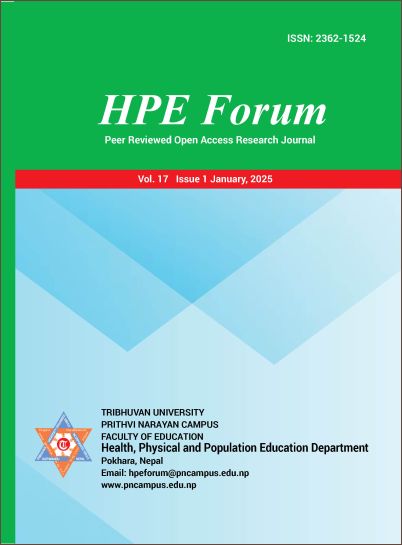Drowning in Contamination: The Hidden Perils and Solutions to Water Pollution in Nepal
DOI:
https://doi.org/10.3126/hpef.v17i1.76511Keywords:
water pollution, environmental degradation, sustainable development, contaminants, aquatic preservationAbstract
Water pollution in Nepal has emerged as a critical environmental and public health issue, driven by rapid industrialization, agricultural intensification, and unregulated urban expansion. This research analyzes the multifaceted problem of water pollution in Nepal, aiming to identify key pollution sources, evaluate their impacts, and propose actionable mitigation strategies. Employing a qualitative approach, the study relies on secondary data from government reports, academic literature, and reputable environmental organizations to provide a thorough analysis. The research identifies industrial discharge, agricultural runoff, and untreated domestic sewage as the primary contributors to water pollution. The consequences extend beyond environmental degradation, profoundly affecting human health through the proliferation of waterborne diseases, diminishing biodiversity, and disrupting aquatic ecosystems. Particularly, communities depending on contaminated water sources face significant socio-economic hardships, including health risks and loss of livelihood, highlighting the urgent need for effective intervention. The study emphasizes the necessity of a multi-pronged mitigation approach, advocating for enhanced regulatory frameworks, public education, and sustainable agricultural practices. It also highlights the potential benefits of advanced wastewater treatment technologies and community-driven water conservation initiatives. The findings reflect the immediate need for integrated policy reforms and grassroots engagement to combat water pollution, supporting Nepal’s broader goals of environmental sustainability and improved public health.




